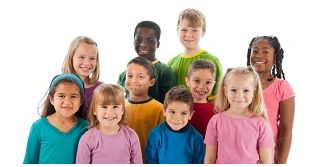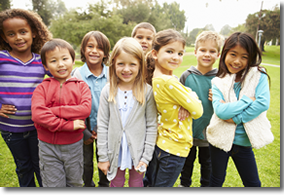Bullying—What Parents, Teachers, Adult Volunteers and Children Need to Know, Part One
By Sr. Patricia E. Hudson CSJ, LMHC
Consultant to the VIRTUS® Programs
 Definition—First of all, let’s define bullying. It is deliberate, recurring, and intentional activity by the bully that is intended to create fear and dominance over the person being bullied. There is an imbalance of power. It can be verbal, physical or emotional. It is unprovoked… and the bully is stronger than the victim or perceived to be stronger (Smith & Thompson, 1991).
Definition—First of all, let’s define bullying. It is deliberate, recurring, and intentional activity by the bully that is intended to create fear and dominance over the person being bullied. There is an imbalance of power. It can be verbal, physical or emotional. It is unprovoked… and the bully is stronger than the victim or perceived to be stronger (Smith & Thompson, 1991).
What Age Group is at Greater Risk of Being Bullied—It is interesting to note that 75 percent of middle school, 43 percent of elementary, and 45 percent of senior high school principals say bullying or harassment is a serious problem, (http//www.parentfurther.com) clearly indicating children of middle school age are at greater risk of being bullied or of becoming a bully.
Government and the Law—The Department of Education recognizes the seriousness of bullying. In response to several suicides related to bullying, the U.S. Secretary of Education released a statement recently that said, “We need the commitment from everyone at the federal, state, and local level to put an end to bullying.” Several states such as Florida, Kansas, Washington, Georgia, and Massachusetts, to name a few, have bullying laws. For more information about The Education Department's work on bullying visit http://www.bullyinginfo.org; you may check to see if bullying laws have been enacted in your state at the Cyberbullying Research Center at www.cyberbullying.us. It will give you the status updated as of September 2011. It is important to know if the adults working with your child or teen know what the state law says and if they follow that law.
Who is the child or teen who is most vulnerable to school or cyberbullying?
- Loners
- Those who are anxious, shy, or quiet
- A child or teen who looks different because of race or skin color, physical disability, height, or weight
- A child or teen of parents who are “different” (unconventional clothes, accent, known alcoholic, etc.)
- A child or teen who appears weak.
- A child or teen who doesn’t seem to fit in with the rest of the group
Some signs of Being Bullied
- Comes home with damaged or missing belongings
- Reports belongings as stolen
- Comes home hungry even though the child or teen had a more than adequate lunch
- Frequently visits the nurses office with headaches or stomach aches
- Seems to have lost friends
- Appears sad or “down”
- Has lost interest in after school activities
- Makes excuses to stay home from school
- Runs away from home
- Indicates possible suicide
- Hurts him or herself
- Decreased academic achievement
What should a parent do?
- Take it seriously
- Do not encourage the child or teen to fight back or become a bully him or herself
- Praise your child or teen for being honest and telling you about the bullying
- Make sure he or she knows they have done nothing wrong
- Investigate, but get all the facts straight before doing anything
- If the bully finds out the child or teen told and the bully is not dealt with immediately it can become worse for the child or teen, so do not talk about it to other parents until you have addressed the issue with school authorities
- Meet with the teacher(s) and discuss the problem
- Ask what policies the school has to prevent the bullying from continuing and ask for their policy to be put in writing and signed by the principal
- Meet with the principal if you do not get satisfaction from teachers
- Ask for a meeting with the bully’s parents. (Keep in mind the bully needs help also)
- If the school does not cooperate, investigate your state’s laws and present that information to the principal
- If there still is no cooperation, go to the Department of Education and higher until school policies are enacted to prevent bullying
- If a child or teen is different because of a handicap or body shape, size, etc. you need to talk with the child or teen about it and help them understand they are loved unconditionally.
It is important through this entire process to remember that the child or teen who was bullied is most important.
TIPS to be taught to children and adolescents about face to-face bullying
- Never respond or fight back—walk away when the bullying starts
- Avoid places where you will meet the bully such as a corner of the schoolyard or cafeteria or a particular bathroom (use another one)
- ASAP— The bullied child or teen should tell an adult exactly what happened as soon as possible
- Document—A parent or other caring adult should document the child or teen’s report of bullying. It is helpful to have dates, times, who was there siding with the bully, and what happened.
- Hold your anger. The bully wants you to get angry and fight back. Don’t do it.
- Act strong and brave
- Talk about it to someone you trust
- Change something. If the bully is demanding your lunch money, bring your lunch. If he or she is throwing your books on the ground, get a knapsack. Find a way to make the physical bullying impossible.
Adapted from http://kidhealth.org/parent/emotions/behavior/bullies.html)
This article is not part of your continuing training. To access your required bulletins you must log in using the form in the upper left-hand corner of the screen. Then go to the TRAINING tab.



